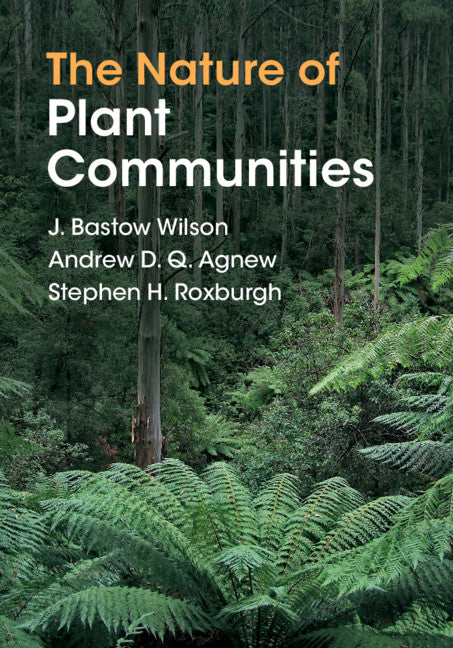Freshly Printed - allow 4 days lead
Couldn't load pickup availability
The Nature of Plant Communities
Provides a comprehensive review of the role of species interactions in the process of plant community assembly.
J. Bastow Wilson (Author), Andrew D. Q. Agnew (Author), Stephen H. Roxburgh (Author)
9781108482219, Cambridge University Press
Hardback, published 21 March 2019
370 pages, 57 b/w illus. 12 tables
25.3 x 17.8 x 2.2 cm, 0.9 kg
'… a very enjoyable read.' Scott L. Collins, The Quarterly Review of Biology
Most people can readily identify a forest, or a grassland, or a wetland - these are the simple labels we give different plant communities. The aim of this book is to move beyond these simple descriptions to investigate the 'hidden' structure of vegetation, asking questions such as how do species in a community persist over time? What prevents the strongest species from taking over? And, are there rules that confer stability and produce repeatable patterns? Answers to these questions are fundamental to community ecology, and for the successful management of the world's varied ecosystems, many of which are currently under threat. In addition to reviewing and synthesising our current knowledge of species interactions and community assembly, this book also seeks to offer a different viewpoint - to challenge the reader, and to stimulate ecologists to think differently about plant communities and the processes that shape them.
1. Plants are strange and wondrous beings
2. Interactions between species
3. Mechanisms of co-existence
4. Community-level processes
5. Assembly rules
6. Theories and their predictions
7. Synthesis.
Subject Areas: Environmental management [RNF], Plant ecology [PSTS], Plant pathology & diseases [PSTP], Plant reproduction & propagation [PSTL], Plant physiology [PSTD], Botany & plant sciences [PST]


